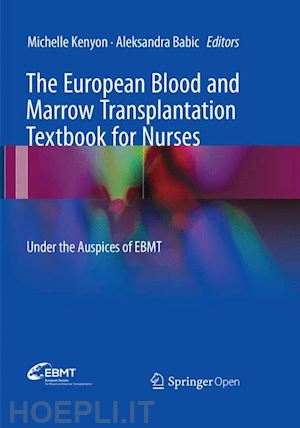
Questo prodotto usufruisce delle SPEDIZIONI GRATIS
selezionando l'opzione Corriere Veloce in fase di ordine.
Pagabile anche con Carta della cultura giovani e del merito, 18App Bonus Cultura e Carta del Docente
This book is open access under a CC BY 4.0 license.
This textbook, endorsed by the European Society for Blood and Marrow Transplantation (EBMT), provides adult and paediatric nurses with a full and informative guide covering all aspects of transplant nursing, from basic principles to advanced concepts. It takes the reader on a journey through the history of transplant nursing, including essential and progressive elements to help nurses improve their knowledge and benefit the patient experience, as well as a comprehensive introduction to research and auditing methods. This new volume specifically intended for nurses, complements the ESH-EBMT reference title, a popular educational resource originally developed in 2003 for physicians to accompany an annual training course also serving as an educational tool in its own right.
This title is designed to develop the knowledge of nurses in transplantation. It is the first book of its kind specifically targeted at nurses in this specialist field and acknowledges the valuable contribution that nursing makes in this area. This volume presents information that is essential for the education of nurses new to transplantation, while also offering a valuable resource for more experienced nurses who wish to update their knowledge.











Il sito utilizza cookie ed altri strumenti di tracciamento che raccolgono informazioni dal dispositivo dell’utente. Oltre ai cookie tecnici ed analitici aggregati, strettamente necessari per il funzionamento di questo sito web, previo consenso dell’utente possono essere installati cookie di profilazione e marketing e cookie dei social media. Cliccando su “Accetto tutti i cookie” saranno attivate tutte le categorie di cookie. Per accettare solo deterninate categorie di cookie, cliccare invece su “Impostazioni cookie”. Chiudendo il banner o continuando a navigare saranno installati solo cookie tecnici. Per maggiori dettagli, consultare la Cookie Policy.